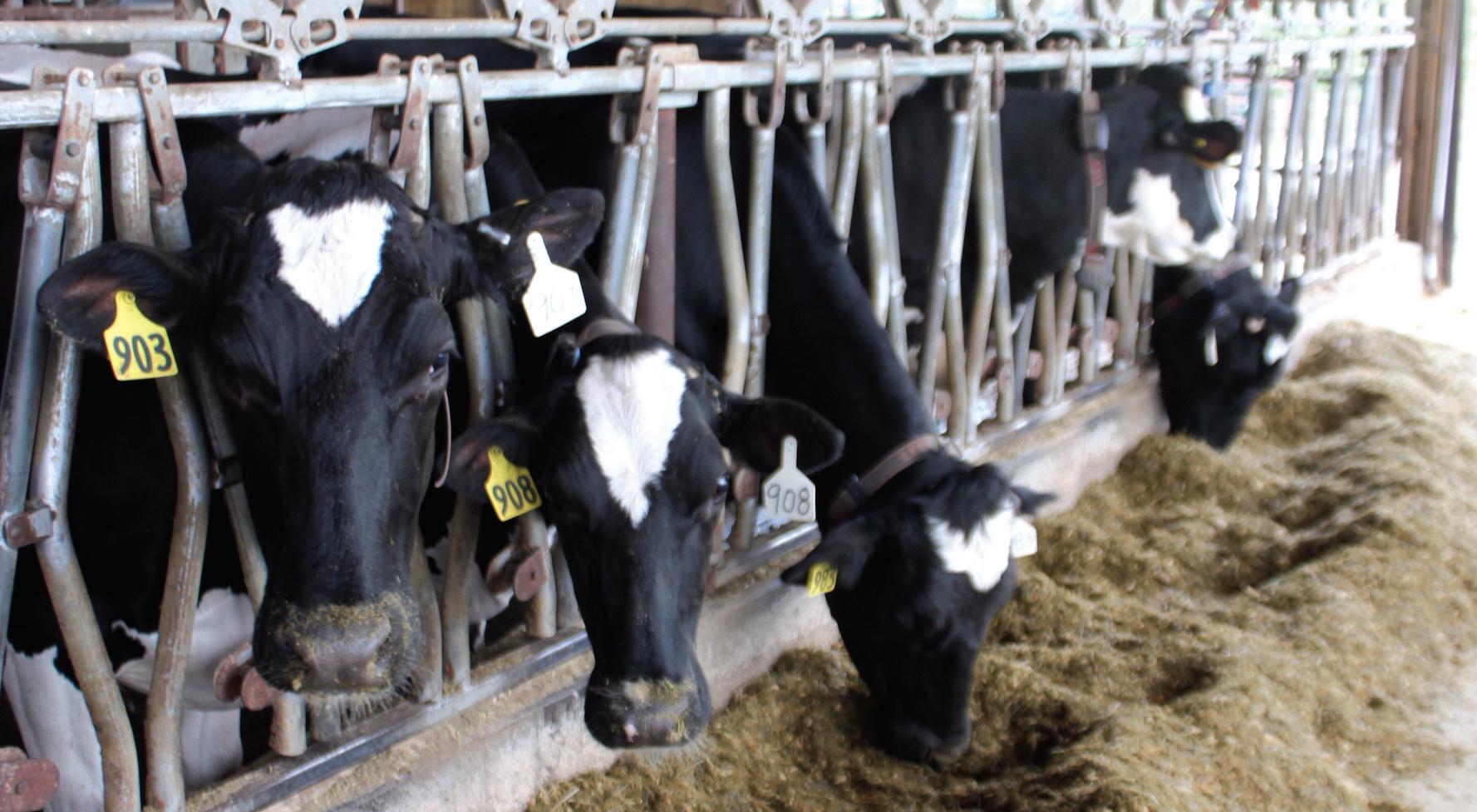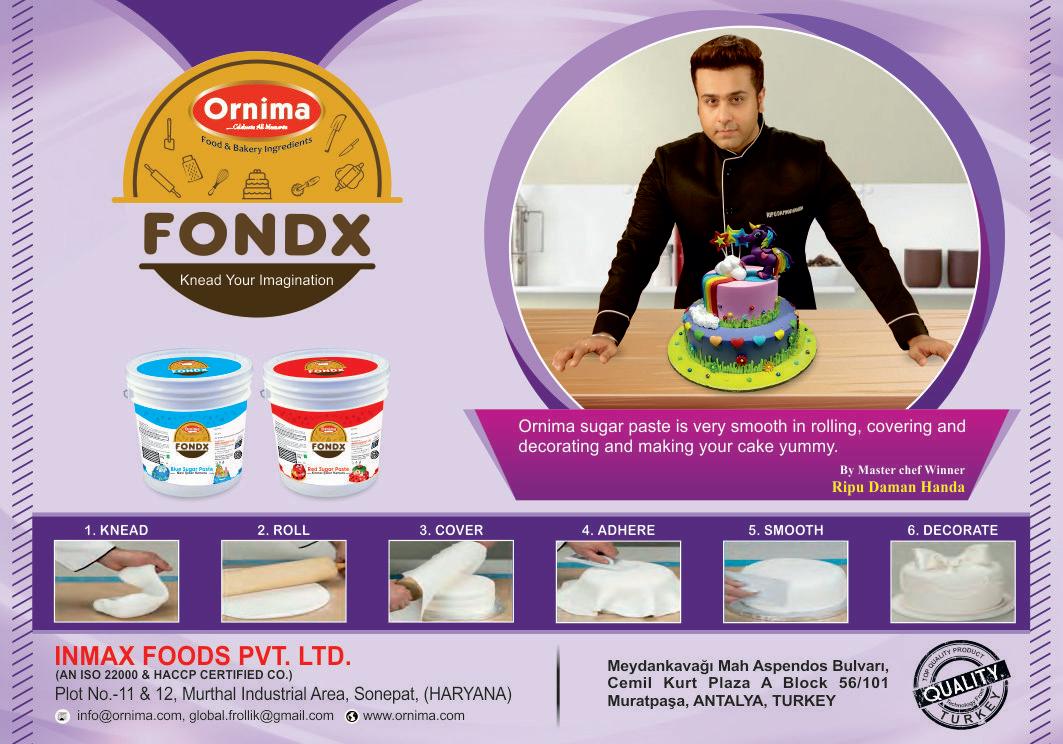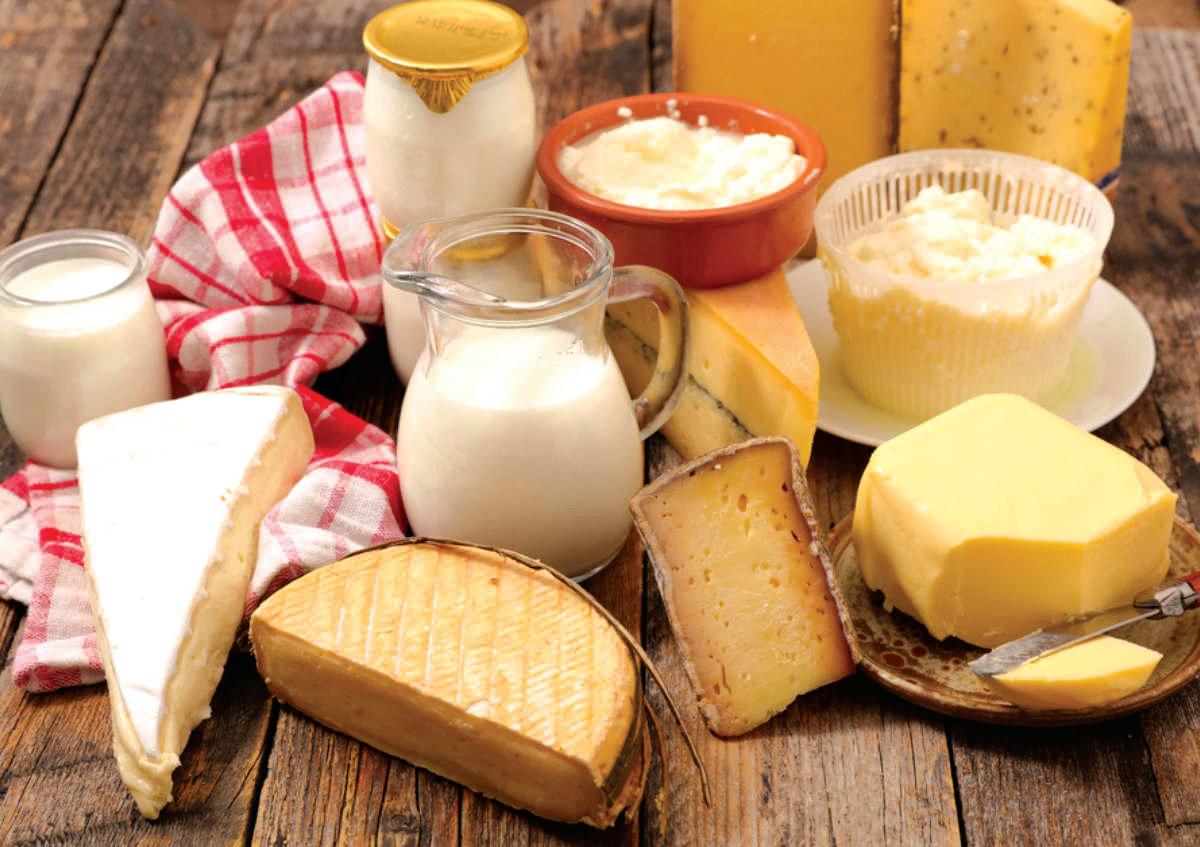
11 minute read
BUSINESS
From Farm to Fork From Farm to Fork
... Opportunities in Dairy Industry
Advertisement
Dairy industry provides ample opportunities for new entrepreneurs to explore, as it makes its way from the farm to the dining table. Today milk comes in various forms. Besides the raw milk, one has low fat milk, fat free milk, flavoured milk, organic milk, lactose milk et al. Besides milk, an entrepreneur also has the option of entering any of the value added dairy products like cheese, butter, ghee, etc. All these dairy products also need packaging, which is another segment that entrepreneurs could explore, besides the machinery needed by the industry. Ashok Malkani examines all segments of the industry available for the enterprising entrepreneurs who desire to enter this industry.
The legacy of milk consumption in India is unique. A glass of milk in India goes from sehat (health) to suhaag raat (wedding night). India, which accounts for 1/5th of global milk production, is the world’s largest producer of milk. According to the latest report by IMARC group, dairy market reached a value of Rs. 11,360 billion in 2020 and is expected to cross Rs. 21,971 billion by 2024.
However, it would be incorrect to state that the lockdown and the pandemic have left the dairy industry unaffected. The lock down and the pandemic have affected all industries, including the dairy industry. Milk, a commodity which is supposed to be the life blood of the country, consumed not only in its natural format but also in value added dairy products, was adversely affected too.
A part of this effect was due to the lock down of the restaurants, hotels, sweet marts and the unorganized food stalls. The milk consumption fell by 25-30% during April-May 2020, due to the adverse effect of the lockdown. Gujarat-based Amul claimed that lockdown had resulted in 25% drop in demand. R.S. Sodhi, Managing Director, Amul, has stated that the exodus of migrant workers, from places like Delhi, Ahmedabad, Surat, et al., back to their villages would
have an impact on the demand.
Pandemic Problems
The restrictive measure imposed by various countries for controlling the pandemic has given a jolt to the global economy. Since dairy is one of the most vulnerable sectors the disruptions caused by restrictive measures is expected to have repercussions on the industry.
It must be realized that it isn’t possible for the industry to cut down milk production irrespective of the market mayhem as the cow has to be milked daily for its health. With decreasing demand this left the dairy farmer with surplus milk. The pandemic also raised another concern for the dairy industry as products like curd and paneer are perishable products and have a short shelf life. Another factor that added salt to the wound was the decrease in consumption of cold products like ice cream, flavoured milk and yoghurt as people are keen to avoid food that can enhance cough and cold.
But, as it is said, every cloud has a silver lining; and several players in the industry have adopted some innovative techniques to tackle the problems. They have forayed into new product categories. Products for immunity boosting such as haldidoodh (turmeric milk), camel milk, and goat milk have started gaining attention. Incidentally haldidoodh is becoming quite popular in the west under the brand name “turmeric latte”. Mother Dairy too has launched turmeric milk recently.

New Products & Players
The dairy industry is also laying more stress on value added products. Gujarat Cooperative Milk Marketing Federation Ltd., which markets dairy products under the Amul brand, has increased its market share in butter, cheese, paneer, ghee, milk, curd, buttermilk and even ice creams and chocolates. Amul has also doubled its immunity boosting range as the demand for such products is rising. Besides haldidoodh, the company has also introduced turmeric ice cream, power packed with turmeric, honey, pepper, dates almonds and cashew. It also has plans to roll out two more products – “Immuno Cakra Ice Cream (a tricolor ice cream of Haldi-Ginger-Tulsi) and Star Anise Doodh in cans.
Several new players have entered with new ideas. Nasik-based Sarda Farms is building a brand through A2 milk. This is a variety of cows’ milk which lacks a form of β-casein proteins called A1. There are two variants of beta-casein called A1 and A2. These proteins affect the body differently. When A1 protein is digested by the small intestine, it produces a peptide called beta-casomorphin-7 (BCM7). The intestines absorb this and pass it into the blood. Doctors have linked BCM-7 to stomach discomforts and symptoms similar to those experienced by people with lactose intolerance.
The A2 protein structure is comparable to that of human breast milk and that of milk from goats, sheep and buffalo. According to industry reports the global market for A2 milk which was valued at $ 5.13 billion in 2018


is expected to reach $26.3 billion by 2026, growing at a CAGR of 22.5%.
Pride of Cows, one of the premium range of products by “Parag Milk Foods”, has now extended its range by adding single origin ghee and curd.
A study conducted by Verghese Kurien Centre of Excellence (VKCoE), at Institute of Rural Management Anand (IRMA), about the effect of Covid-19 on dairy co-operative sector in Gujarat found that except for ice cream the dairy supply chain of Gujarat was least affected. The challenge of surplus milk was handled well by district milk unions, by converting it into value-added dairy products such as butter, cheese, ghee, and milk powder.
There have also been some other changes. Magic Milk, a dairy products brand by Jayshri Gayatri Food Products (JGFP), which was a leading B2B manufacturer, & supplier of dairy products in the India as well 20 other countries changed its market status. Due to the pandemic and PM Modi’s ‘Vocal for Local’ campaign, it has ventured into the B2C Indian market with its dairy products brand ‘Milk Magic’.
Due to the rapidly changing environment and consumer behaviour, the dairy businesses has experienced ebbs and flows over the last few years. However, looking at the current developments, the experts foresee a U-shaped growth curve for the dairy sector wherein the dairy sector is not only expected to stabilize but also grow in the days ahead.
Global dairy industry is also looking at India, for growth during the current scenario. French dairy giant, Lactalis, has launched its flagship milk brand, Lactel UHT toned milk, under its Indian arm to compete with rivals Amul and Nestle A Plus in the tetra pack milk segment in the country. Positioned as antibiotic free milk with immunity-boosting vitamins A and D, Lactel UHT milk will be produced at the company’s Telengana plant for south and east distribution and Maharashtra factory for distribution in the north. Rahul Kumar, managing director of Lactalis India, says, “Consumers want safe ready-to-drink milk amid the pandemic. India is the fastest growing dairy market registering 5-6% growth and the category is growing at 15%. This was the right time to launch the product.”
It is expected that milk production and dairy products will grow over the next few years. Addressing a webinar organised by Federation of Indian Chambers of Commerce & Industry (FICCI), Atul Chaturvedi, Secretary, Dept. of Animal Husbandry & Dairying, Govt of India, said that India’s dairy industry is one of the fastest growing sectors in the world and has set the goal to double its processing capacity from 53.5 MMT to 108 MMT by 2025. The government in its roadmap for 2025 for the dairy sector also aims to increase value added products from 23% to 40% and India’s exports share in the world from 0.36% to 10%, he added.
Investment Opportunities
Chaturvedi stated that though the sector was facing a crisis even before the pandemic, the industry was able to turn the COVID crisis into an opportunity. He disclosed that the Indian dairy is Rs 10 lakh crore industry with significant growth potential and highlighted the five key investment opportunities for the private sector. It included production and supply of affordable compound cattle feed; enhancing chilling infrastructure by setting up new BMCs; setting up processing infrastructure; enhancing processed milk distribution capacity; and enhancement of D2C milk supply across top consumption hubs.
Increasing Market for VADP
For an entrepreneur seeking to enter dairy industry, it may be mentioned that the industry has vast scope, as the industry comprises not just of milk (in different variants) but also value added dairy products (VADP). With people’s willingness to spend more for healthier superfoods, the dairy industry’s value added products have received a boost. The VADP industry is growing at a rate of 15%-20% yearon-year. As per a Crisil report, the Rs. 25,000 crore value-added dairy products industry is set to outpace liquid milk sales in 2021.
It may be mentioned that processing of dairy products gives small-scale dairy producers higher cash incomes than selling raw milk and offers better opportunities to reach regional and urban markets.
The growth in VADP is, according to research agency Nielson, driven by the following factors: 1. Affordability 2. Quality 3. Growing demand for healthy foods
Packaging
Another field that the entrepreneur can explore is that of dairy products packaging. Packaging provides protection, information, security, and other benefits. It prevents contamination and is also helpful in strorage and transportation. The dairy packaging industry has witnessed new packaging technologies as per the requirements and convenience of the consumers. According to Market Research Future (MRFR), the market for global dairy packaging material would reach $ 25 billion by 2023.
According to Mordor Intelligence, the dairy packaging market was valued at $ 21.51 billion in 2020 and expected to reach $ 28.08 billion by 2026, growing at a CAGR of 4.61% over the forecast period (2021 - 2026).
With the government initiative for promoting health and reducing plastic packaging, there is an increase in aseptic packaging.
Packaging is an indispensible vehicle to deliver products to consumers.
One of the methods for packaging of dairy products is the Modified Atmosphere Packaging (MAP) which replaces the air in the pack with a single gas or mixture of
gasses. This technique has proven to be useful in prolonging the shelf life of cheese. It also increases shelf life of ready-to-serve pizza to 45 days.
Another innovative packaging technology is Active Packaging. It incorporates certain additives into packaging film or within packaging containers by which package, product, and environment interact to prolong shelf life or enhance safety or sensory properties as well as maintain the quality of the food product
A joint report by Tata Strategic Management Group (TSMG) and the Federation of Indian Chambers of Commerce and Industry (FICCI) states that proliferation of ecommerce, coupled with revolution in retail industry in India, is also “pushing the growth of the packaging sector”
Some of the latest investments in India’s dairy packaging field help excluding preservatives and refrigeration. Schreiber Dynamix has started a RS 100 crore aseptic packaging plant in collaboration with Tetra Pack. Eflex too has introduced a Rs. 580 crore aseptic plant. Mahindra group has introduced innovative poly pack for its Saboro brand of milk that turns blue on adulteration,
According to Shiva Mudgil, senior analyst at Robobank, the demand for packaging solutions by the sector is increasing by 20% due to the increasing awareness among consumers on product safety and growing demand for value-added products.
Equipment for dairy industry
Equipment needed in the dairy industry is another segment that an entrepreneur can venture into. According to Meticulous Research global dairy processing equipment market (comprising of Pasteurizers, Homogenizers, Mixers & Blenders, Separators, Evaporators & Dryers, Membrane Filtration Equipment), is expected to touch $11.05 billion by 2024. Dairy processing equipment provides solution to meet the increasing demand for dairy products along with functional and innovative products. Changing tastes and preferences among the customers for healthier and appetizing dairy products are accelerating the demand for processing machinery.
Besides the demand for processing equipment in India, there is also an overseas demand for Indian dairy machinery. Even developed countries like USA and Canada are focusing on Indian dairy machines as they are more cost effective.
Though the demand for Indian dairy machines has been fluctuating over the years, there is little doubt that this can prove to be a segment that will grow over the years, particularly since there is a rising awareness of health and cleanliness in the manufacture of dairy products.
Chilling machine is another lucrative investment opportunity which provides good return particularly with the pro-active support that the government is offering.
However, it is necessary to forewarn about the lack of accurate data/techniques to forecast demand for dairy equipment and components. The companies will also have to develop machines with developing capacities that satisfy demand, besides being competitive in terms of price, quality, technology, delivery and services.
It may be mentioned that at present European machinery manufacturers dominate the global market but there is an increasing demand for low cost and small/medium volume equipment in India.
The dairy industry thus provides opportunities in multifarious segments for enterprising entrepreneurs. n










